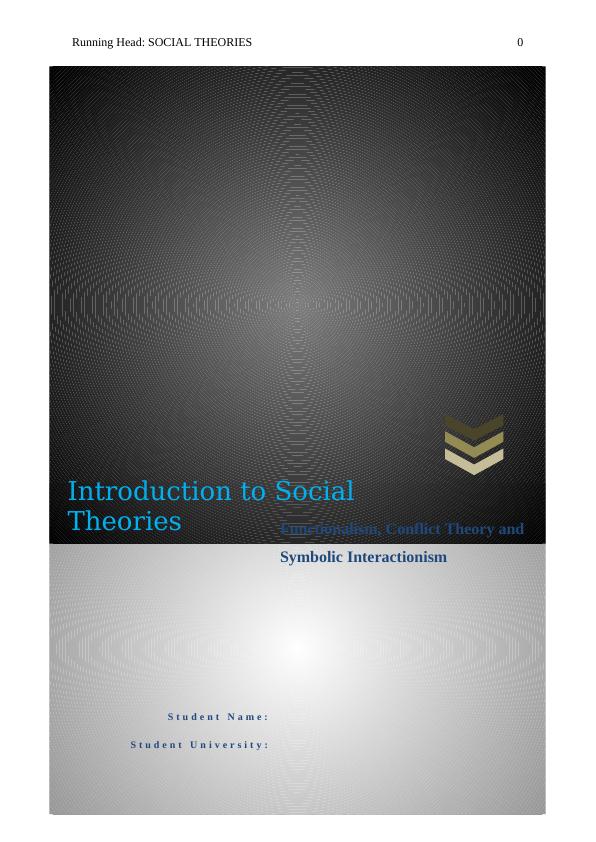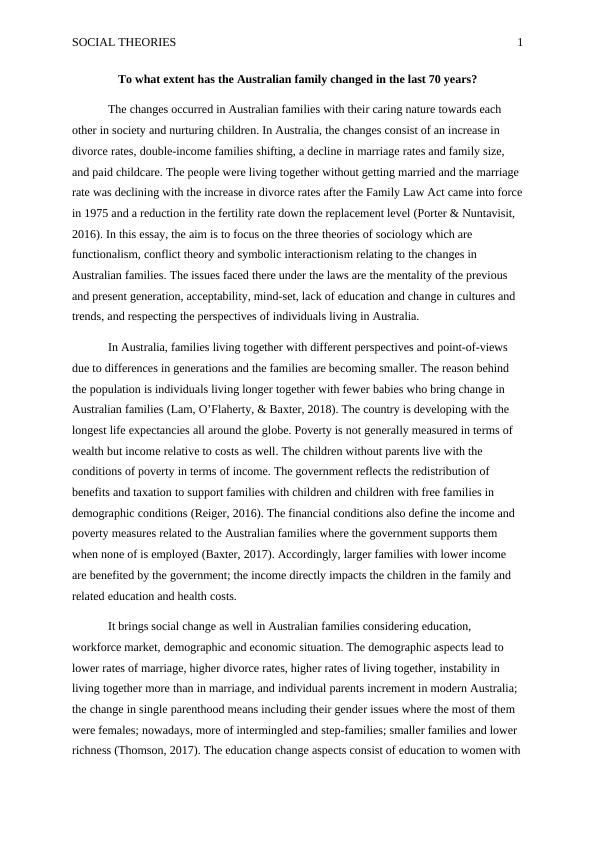Changes in Australian Families: A Sociological Perspective
The task requires the student to demonstrate their understanding of the three key sociological paradigms by applying them to an important social question/issue.
8 Pages2851 Words75 Views
Added on 2022-12-21
About This Document
This essay explores the changes that have occurred in Australian families over the past 70 years, including the increase in divorce rates, double-income families, and decline in marriage rates. It examines the three sociological theories of functionalism, conflict theory, and symbolic interactionism to understand the reasons behind these changes. The essay also discusses the issues faced by Australian families, such as generational differences, changing cultures and trends, and the importance of respecting individual perspectives.
Changes in Australian Families: A Sociological Perspective
The task requires the student to demonstrate their understanding of the three key sociological paradigms by applying them to an important social question/issue.
Added on 2022-12-21
ShareRelated Documents
End of preview
Want to access all the pages? Upload your documents or become a member.
Three Social Paradigms - PDF
|12
|2689
|100
Changes in Australian Families in the Last 70 Years
|12
|2676
|57
Sociology Research Australia 2022
|3
|534
|26
Sociology Assignment - DOC
|8
|1751
|74
Iceland Lifestyles
|6
|1659
|93
Factors for Marriage Assignment PDF
|8
|2056
|66



